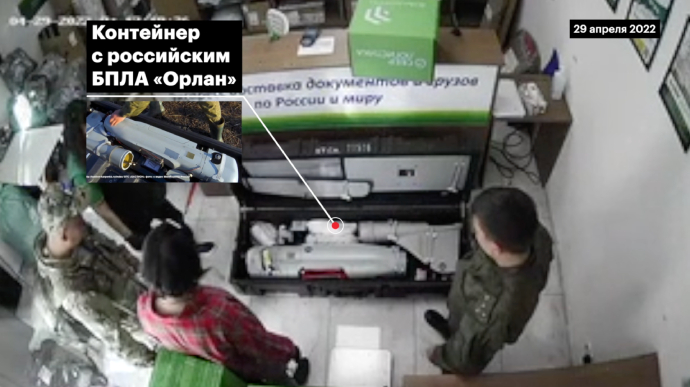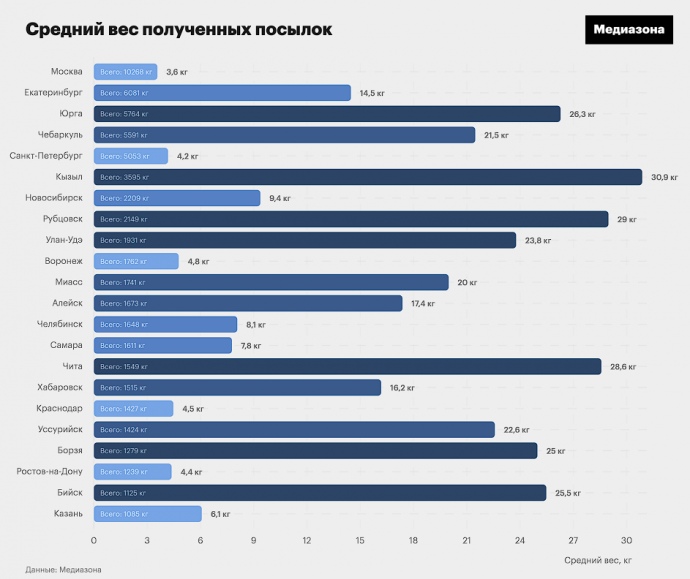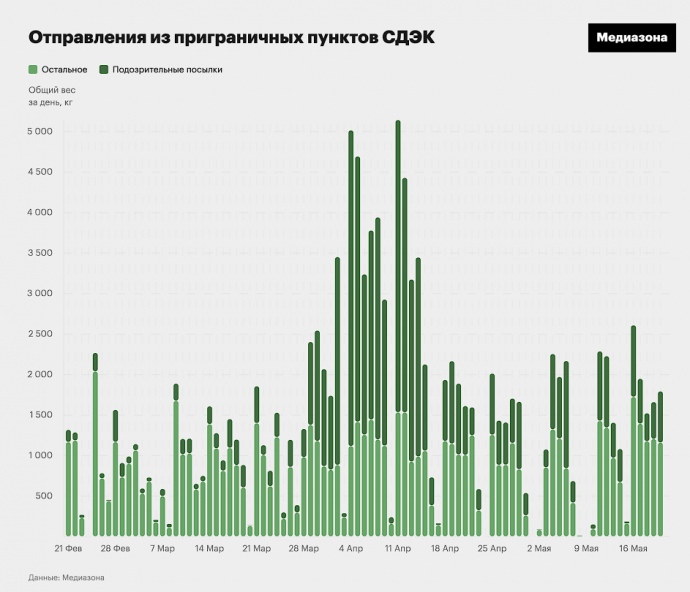Mediazona investigation: Russian troops have sent 58 tonnes of parcels from the Ukrainian border

ROMAN PETRENKO — THURSDAY, 26 MAY 2022, 14:58
Researchers monitoring the parcel delivery company SDEK in 13 cities on Ukraine's border with Russia and Belarus have found not only an abnormal increase in shipments that coincided with the start of the war, but also some unusual connections between cities that confirm the story that rampant looting has been going on.
Source: Mediazonа investigation
Details: The journalists explained that the SDEK parcel delivery service allows customers to track shipments, and the weight of the parcel can be seen in the code on the page.
They also learned that the company gives each order an individual [tracking] number. Going through the numbers, the journalists collected data on all SDEK shipments from 21 February onwards.
As a result, suspicious packages were found at 13 SDEK post offices: in Armiansk and Dzhankoi (Crimea), Pokrovskoe (Rostov Oblast), Boguchar and Rossosh (Voronezh Oblast), Valuyki (Belgorod Oblast), Zheleznogorsk and Rylsk (Kursk Oblast), and Mozyr (Belarus).
Valuyki is in the Kharkiv area; Klintsy, Novozybkiv and Mozyr are in the Kyiv-Chernihiv area; Rylsk is in the Sumy area; and Dzhankoi and Armiansk are in the Kherson-Melitopol area.
At the same time as Russian troops withdrew from the Kyiv Oblast, on 29 March, the volume of suspicious orders from border towns gradually increased. On 26 March the weight [of parcels] was 338 kg, but on 29 March the parcels weighed over a tonne, and on 2 April they exceeded 2.5 tonnes.
According to the data obtained by Mediazona, more than 15 tonnes of suspicious goods were shipped from the town of Valuyki from 21 February to 20 May. Valuyki is located 30 km from the border with Ukraine and 20 km from the "LPR" [the self-proclaimed Luhansk People’s Republic].
More than 13 tonnes were shipped from Klintsy, which is 60 km from the Ukrainian border, in the same period.

To prove that such large volumes of parcels are not a sign of stable social ties between the border towns and Siberian cities, the journalists checked how many parcels went in the opposite direction.
Parcels from the border weighing about 5.8 tonnes arrived in Yurga [a town in Kemerovo Oblast, Siberia, Russia], but only 51 kg of parcels went in the opposite direction. Chebarkul [a town in Chelyabinsk Oblast, Russia], where more than 5.5 tonnes [of parcels] were delivered, sent back less than 10 kg worth of parcels to the border during the whole three months. Not one parcel was sent to the border from Kyzyl [the capital city of the republic of Tuva, Russia].
Yurga, a city in the northwest of Kemerovo Oblast, Siberia, topped the league table of "suspicious" cities. About 5.8 tonnes of parcels went from the Ukrainian border to this city, which has a population of just 80,000 people.
Three large military units are based in Yurga: the 106th Separate Logistics Brigade, the 74th Separate Guards Zvenigorod-Berlin Order of Suvorov (which was one of those stationed in Bucha, Hostomel and Irpin - ed.) and the 1st Artillery Brigade.
Chebarkul in the Chelyabinsk Oblast took second place in terms of the weight of orders. Two tank regiments are stationed there: the 6th and 239th.
116 suspicious parcels weighing more than 3.5 tonnes were sent to Kyzyl, the capital city of the republic of Tuva, Russia. The 55th Separate Motorised Infantry Brigade is stationed in Kyzyl.
And in one case, Russian soldiers used SDEK to ship a Russian Orlan drone - they may have robbed not only Ukrainians, but also their own army.






